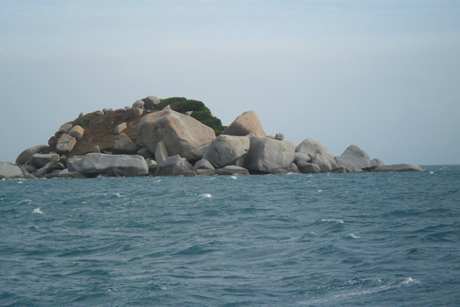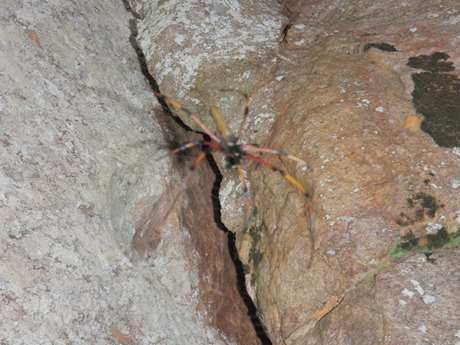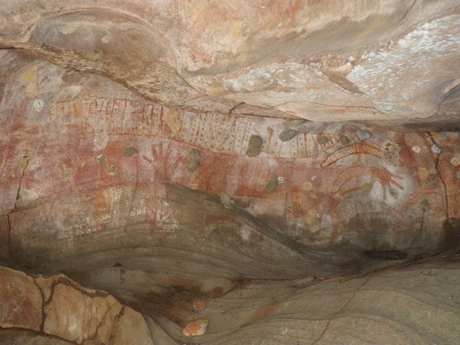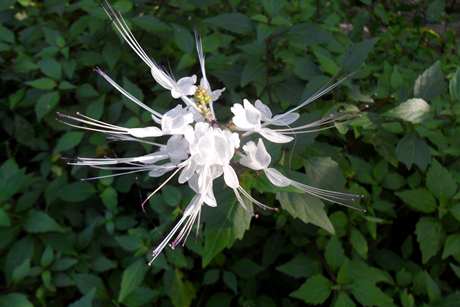Rounding Queensland 10 35S 142 14 E

 Going northwards, speeds of
8.5 to 9 knots have us quickly passing islets which are just great mounds of
rocks off Cape Rock as we head for Flinders Islands. These mounds of granite
boulders dominate the land and rise out of the sea, tumbled heaps with rocks so
big they could not be climbed. Vegetation somehow gets a grip in the sandy
crevices creating a colourful scene on the water. These are tors like those on
Dartmoor but on a grand scale. As we came up the coast the white silica dunes
gradually gave way to these tors. At one place we thought there must be people
on the slopes but it was a spectacle of tall upright boulders lined along the
spur and marching toward the sea. The lowish hills are just covered in boulders.
The dunes we have been passing are different from any we have seen before. When
people speak of white sand beaches they usually mean a gleaming creamy coloured
sand but these dunes are brilliant white and could easily be mistaken for snow
if the weather was cold. They go on for miles and miles.
We have had some beautiful anchorages out in the islands of the reefs. These islands can be large and hilly or just blips caused by gathering sand, mud and shells on a high part of a massive reef plate. Some of the blips are tiny, others support small mangrove forests, native flax and palm trees. This anchorage in the Flinders Islands was very peaceful.
Sailing up inside the barrier reef has mostly been delightful. We have had flat seas, protected as we are from ocean swells, and steady winds. In addition there has been a favourable current of a knot or so all the way to Horn Island at the tip of Queensland. We even caught a nice Spanish mackerel.
We have had to be rather more alert than on our normal long passages as the navigation can be tricky and there are a surprisingly large number of ships using this inside passage. At night there are also prawn boats covered with bright lights. When our pilot book was written there were so many as to be a hazard in some areas but prawning has become uneconomic as Thailand dominates the market. The only problem we have had is that the locals seem to be burning mainland Queensland. The smoke that affected us further south has continued to be a nuisance. Occasionally in the evening when the smoke clears off there is the smell of flying foxes carried on the air. A slightly unexpected hazard is that there are strong tides in the Torres Strait for which we have heights and times but not the tidal streams. Consequently when we went through the narrow Albany Passage close to the tip of Queensland we had a 3 knot current against us...just like being back in England!
Ozzie Spider - about 6 inches across
 More Aboriginal Rock Art
 Snakes and
hands
Standing in the light
  Man
Gangaruu

|

